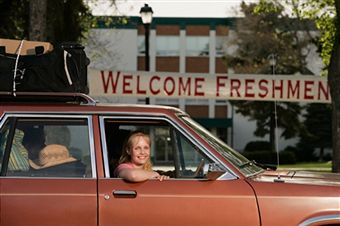4 Transition Tips for New College Students
 As the summer draws to a close and you begin your first semester at your new school, there are a few items to consider in addition to your class schedule and moving into your new residence. No matter if your journey starts on the east coast, west coast, or in-between coasts, we have assembled a few universal tips for all new students starting at a four-year institution.
As the summer draws to a close and you begin your first semester at your new school, there are a few items to consider in addition to your class schedule and moving into your new residence. No matter if your journey starts on the east coast, west coast, or in-between coasts, we have assembled a few universal tips for all new students starting at a four-year institution.
-
Leave preconceived ideas at the door: You may have ended up at your second choice school. You may have thoughts on the diversity of your new campus, or the type and background of your fellow students. You may have a perfect idea of how the year is supposed to go. Take all those thoughts and toss them out the window! Walk into every new room with an open mind, approach all your professors and classmates with enthusiasm, and be prepared to take in the good moments and the bad ones too. Find ways to engage with your new environment by joining clubs, seeking out opportunities through your professors or departments, and exploring all the programs your new campus has to offer.
-
Figure out how to get around town: Figure out the campus bus schedule and bus or mass transit schedule for the closest town. Even if you have your own car, knowing the bus information can get you to class on time the day your car decides not to start. Most college towns have arrangements with the local public transportation for discounted student passes, so find out if there is a deal for students at your school.
-
Start to make the physical space your own: If you haven’t already done so, familiarize yourself with your new campus. Besides figuring out where your classes are and where the dining hall is, you should take an hour one day to locate relevant offices and spots, including the health center, the gym, and the registrar. Identify a good study space (hint: your dorm room is probably not the best place!) and a space you can retreat to after a long day for some personal time.
-
Do not hide your disabilities: If you have a physical or learning disability or behavioral needs, find the appropriate resources right away. Acquire the relevant documentation and find out about the accommodations and services available to you—then USE THEM! The resources are there to assist you in gaining equal access to your education. Use the available resources to maximize your time at your college.
Check back next week for more tips for a successful transition!